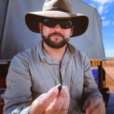
Showing 601 - 620 of 876 results

Visiting Australia - ANSTO-HZB Neutron Training Course 2024
Advancing particle therapy
Meeting of minds about potential next-generation cancer treatment for Australians
New partnership and nuclear techniques to aid cancer research
Historical tour of HIFAR
Progress on new oxide ion conductors
New material shows enhanced conductivity for solid oxide fuel cells used in satellites, spacecraft, transport vehicles and as power source
Fine-tuning chemistry for advanced materials
Doping with transition metals produced stability in bismuth oxide.
Fine-tuning chemistry
Doping with transition metals produced stability in bismuth oxide.
Indigenous Kakadu plum farmers attend ANSTO workshop
Indigenous Kakadu plum farmers attend workshop on use and application of the elemental fingerprint technology for indigenous bushfoods provenance.
Nuclear power technologies
Nuclear power is used as a reliable and clean energy solution in most OECD countries and many other parts of the world. Although it is banned in Australia, a number of government reviews are looking at current prohibitions on nuclear power.

Bacteria-driven remediation of iron ore tailings
Billions of tonnes of iron ore tailings are generated each year from the mining industry. Converting these toxic tailings into soil-like materials which can develop and sustain plant and microbial communities is critical for mine site remediation and improved environmental outcomes.

Pipeline Accelerator Voucher Scheme
Voucher scheme accelerating medical research
STEAM Club for Girls
Offered to girls in Years 5, 6 and 7, the STEAM Club encourages creative exploration of Science, Technology, Engineering and Mathematics through the Arts (the A in STEAM).
Australian environmental research featured in US science magazine

Role at ANSTO

Call for Proposals
Proposals at the Australian Centre for Neutron Scattering and National Deuteration Facility.
Declaration of the national radioactive waste management facility in South Australia is an important outcome for Australia
A site for the National Radioactive Waste Management Facility has been acquired, with the new facility to be built near the town of Kimba on the South Australian Eyre Peninsula.
Rock art dating
Development of new techniques makes it possible to date Australian Aboriginal rock art.

Materials in extreme environments
Material researchers at ANSTO use a range of in-house capabilities in the development, testing and characterisation of existing and emerging materials for extreme environments of the novel nuclear (fission/fusion) based energy-generation systems.
Partnering with government and Aboriginal organisations to ensure the safety of drinking water in Aboriginal communities
ANSTO is working with government partners to ensure that radioactivity in drinking water supplied to Aboriginal communities is at levels considered safe for consumption.